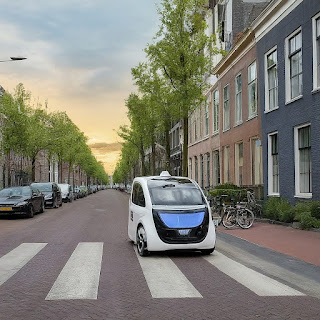Why we end up having one thriving satellite town and another ghost town next to same metropolis? Whether interrelationship of two adjoining cities can be redefined?
We have seen some greenfield satellite towns/ large residential townships around a metropolitan city thriving and some not doing so well and one or two of them may just qualify for a ghost town. The ghost town that initially came up with promising development vision bullish on being in vicinity of metropolis. Though these new towns saw a sudden growth in real estate activities but plummet soon as they eventually had no takers of property. Whether few kms away or close, we realise that success of a satellite town/ large development is not simply a function of distance from metropolis.
We see in this case that proximity in a metropolitan or city region may not just be a function of measure of distance unit (km/ mile). For instance in case of connectivity between two cities, lets think of "20km of 2 lane road with no public transport" vs "20km of 6 lane expressway" vs "20km of metro/ rail/ bus connectivity" vs "20km of electric bike infrastructure" vs "20km of smart corridor with connected infrastructure conducive for autonomous vehicles". Distance of 20 to 30km treated differently, may mean different things in a different conditions and prove to be a deciding criteria for success/survival of greenfield project outside metropolis.
It also implies that the success of any new development especially away from metropolis, (new township or satellite town) highly depends on external factors like good connectivity, but these external factors like connectivity often remains outside of means/budget, purview and scope of consortia of real estate agencies or local public administration; reinforcing the fact that a new satellite town or large development away from metropolitan city can only succeed -
1) if they have high speed multi-modal connectivity, range of mobility options, supportive corridor landuse, or
2) if it has either critical mass of mixed complimentary land usage within itself (work-home-commerce) for autonomy, or
3) if it is specialised enough to sustain on its own (university, science park, R&D ecosystem etc).
Silver lining? Yes, distance can always be manipulated with right interventions to make distances feel like within reach by making journey easy/ engaging/ meaningful. Which means that relationship and transactions (labour-housing-entertainment) of two settlements/ town/ cities (both existing and greenfield) in proximity can always be improved based on restructuring/ reconceptualising its transport linkages and restructuring landuse around transit backbone. This may be one of the key aspects of smart region.
Author: Anoop Jha
Please visit my web page "Urban Tenets" at https://urbantenets.nl/
************************************************
#urbanplanning #smartregion #smartcity #Amsterdam #Utretch
#Hague #alkmaar #noordholland #northholland #Eindhoven #Rotterdam #Netherlands
#mobility

.jpg)
.jpg)

.jpg)
.jpg)
.jpg)
